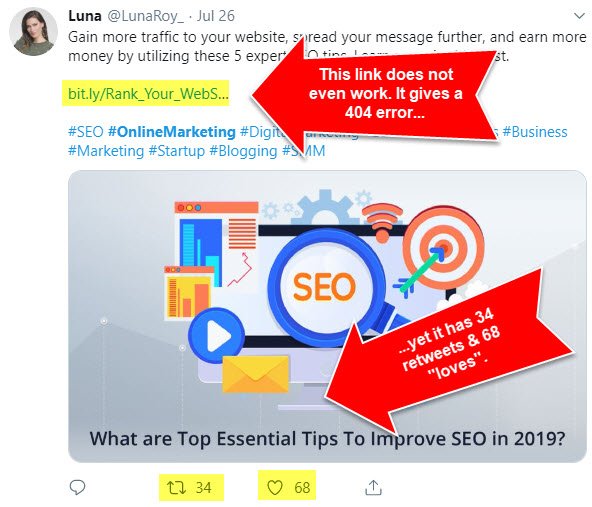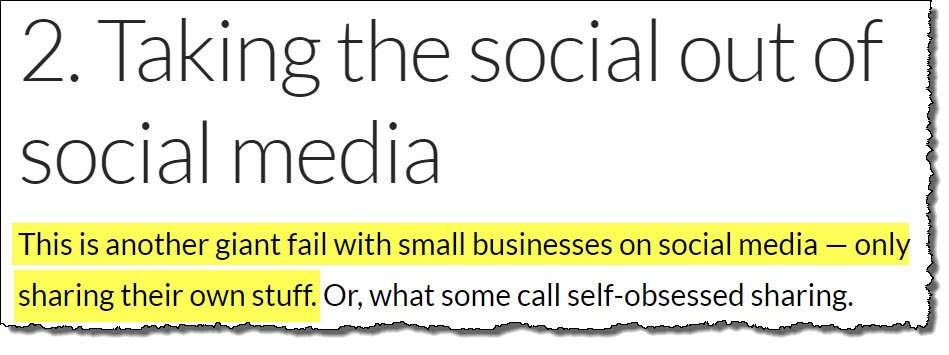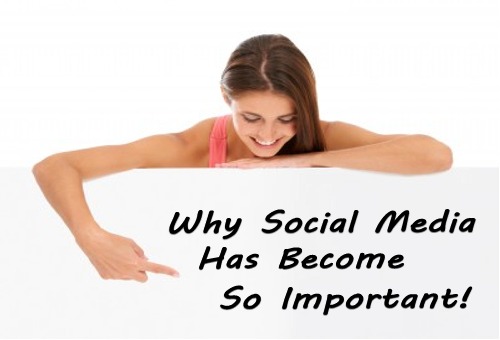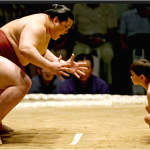 To build organic traffic to your web content in 2020, what is the first step you will take?
To build organic traffic to your web content in 2020, what is the first step you will take?
Get social media shares!
Nope, not even close.
In this article, I am going to demonstrate in a very simple, data-driven, obvious way why online marketers who spend their time building inbound links are kicking your social-media focused arse!
Yes, that’s right.
Those 5,000 Facebook shares of your article? The truth is: Most of those social sharers did not even visit your page much less read your article.
And, even if they all did read your content (which they didn’t), that’s 5,000 one-time visitors.
Wouldn’t you prefer to have 5,000 visitors every month instead of just one time? Over the course of 3 years, that’s 180,000 visitors to 5,000.
That’s organic traffic success! And how do you achieve that? With quality inbound links that place your content at the top of the search engines.
Let’s prove it…and how easy it is to prove.
The “Content Marketing” Test: Social Shares vs Inbound Links
“Content Marketing” is a challenging keyword to rank for in the online world. It has a degree of difficulty of 93 according to this fantastic new Moz keyword research tool. 93 is a very high keyword difficulty.
So, let’s take a look at the top Google organic results for “content marketing” versus the top socially-shared results for “content marketing” in the past year.
If social sharing is the end all be all, as many would have us believe, these results should be the same, right?
Let’s have look.
(NOTE: I just noticed that near all of these sites also use HTTPS. So, if your site is not there yet, check out our WordPress HTTPS guide.)
How many of the top socially shared articles appear in the top 10 organic results?
Exactly ZERO! That’s right – none!
Why not? Inbound links.
All of the top organic results have better inbound link profiles than the socially shared articles.
Take a look at the inbound link profile of the #1 socially shared article of the year for the term “content marketing”.

2 inbound links? You have got to be kidding. 2 inbound links!
Buzzsumo says that this article has been “shared” 18.1 thousand times.

And 2 inbound links? Is this more proof that people do not even read socially shared items?
Let’s take a look at one of the latest Twitter posts I viewed. As you see below, it was entitled “What are Top Essential Tips To Improve SEO in 2019?” and I was excited to read this post because it’s directly involved with what I do and it had over 34 retweets and 68 hearts. But I couldn’t read the actual post…

…because the link didn’t even work. The link produced a 404 error…and yet so many people had retweeted and actually showed their deep love by pressing the heart?
You think that Google is not aware of this social media hypocrisy?
Here is the inbound link profile of the #1 Google organic result for “content marketing”.

Enough said? More than 13,000 inbound links!
You can rinse and repeat this simple data-driven approach for virtually any keyword and the results will lead you to the same conclusion: Inbound links trump social shares every time!
Why Google Values Inbound Links Over Social Shares?

Ranking: Degree of Difficulty
If you’ve ever watched a diving contest at the Olympics, each dive is assessed a degree of difficulty. If the degree of difficulty is high and the dive is executed successfully, that diver will receive a higher score.
Content marketing organic success is not that different.
In their own way, Google has assigned a degree of difficulty to an inbound link that just doesn’t exist with a social media share.
I ask: How difficult is it to get a social media share?
Not at all. In fact, I can usually buy a legitimate Facebook like (via FB advertising) from an English speaking Facebook user for pennies.
And, even if I am not advertising, what is the degree of difficulty in a Facebook user clicking the like button when your post appears in their feed? Not much.
It’s why nobody reads beyond the headlines on social media. (So you should understand how to create amazing headlines!)
The degree of difficulty in acquiring inbound links is comparatively enormous!
This is why online experts like Brian Dean spend 80% of their timing doing promotion compared with 20% of their time creating content. It’s the Pareto Principle in Online Marketing.
Acquiring inbound links demands that you have incredibly linkable content AND that you are actively marketing that great content.
Very high degree of difficulty…and much more work than quickly posting your content on Facebook.
Should I Stop Acquiring Social Media Shares? Are They Useless?
Absolutely not!Involvement in social media has many benefits. Facebook is a location that has just about every potential customer that you would want to target and, with a bit of savvy, you can find them and convert them into real customers.
But, this article is about organically ranking your content in Google and the best way to do that is with inbound links from authority sources.
Take a look at the post 8 major Google ranking signals from Search Engine Land. Would you be able to guess what their #1 ranking signal is?

And where do we see social signals mentioned in the Search Engine Land article? Nowhere.
So Why Are People Spending So Much Time On Social Media?
Vanity, intelligence, and stupidity all in one.Vanity: The number of social media followers a particular person or business has is often referred to as a vanity metric.
In fact, I have been told many times by people: “Company XYZ is doing very well. They have 7,500 Facebook followers. “
Guess what? You can buy those through the normal Facebook advertising channels for comparatively nothing. You might want to check where those followers actually come from. There’s a good chance it’s from a country of clickers like Egypt, Vietnam, or India.
I’m not saying that this is a bad thing. People tend to like and follow what others like and follow. Thus, we can say that suspect likes will generate real likes.
If people like your business because it has 7,500 Facebook followers, that is one customer that you may not have otherwise attained. So go for it!
Intelligence: Maintaining an active presence on several social media platforms is an intelligent business decision.
As we’ve said, all of your customers are on social media and it is a great way to spread your message, provide helpful services, and keep in touch with your customers.
Plus, just as companies check your website before they will do business with you, they now also check your social media sites.
So, it’s an intelligent business decision to keep up on social media.
Stupidity: The stupidity comes into play when companies mistakenly assume that they are getting way more organic traffic value from their social media presence than they actually are.
Here is the content marketing strategy of half the world: Create great content and then post it to all social media accounts (which, by the way, is the #2 reason most businesses fail at social media).

Posting your content ONLY on social media and doing nothing else is NOT a content marketing strategy.
It IS a good way for your content to languish in literary Siberia only being phantom-shared by human bots in foreign countries.
In order not to be organically stupid, you MUST (not should, but MUST) spend your time acquiring quality inbound links!
Richard Cummings
Latest posts by Richard Cummings (see all)
- Indexing Requests Currently Suspended [Google Search Console] - October 15, 2020
- Google Analytics and Google Tag Manager Code:Do I Need Both? - September 19, 2020
- WordPress X Theme:How To Setup Google Tag Manager - September 17, 2020










